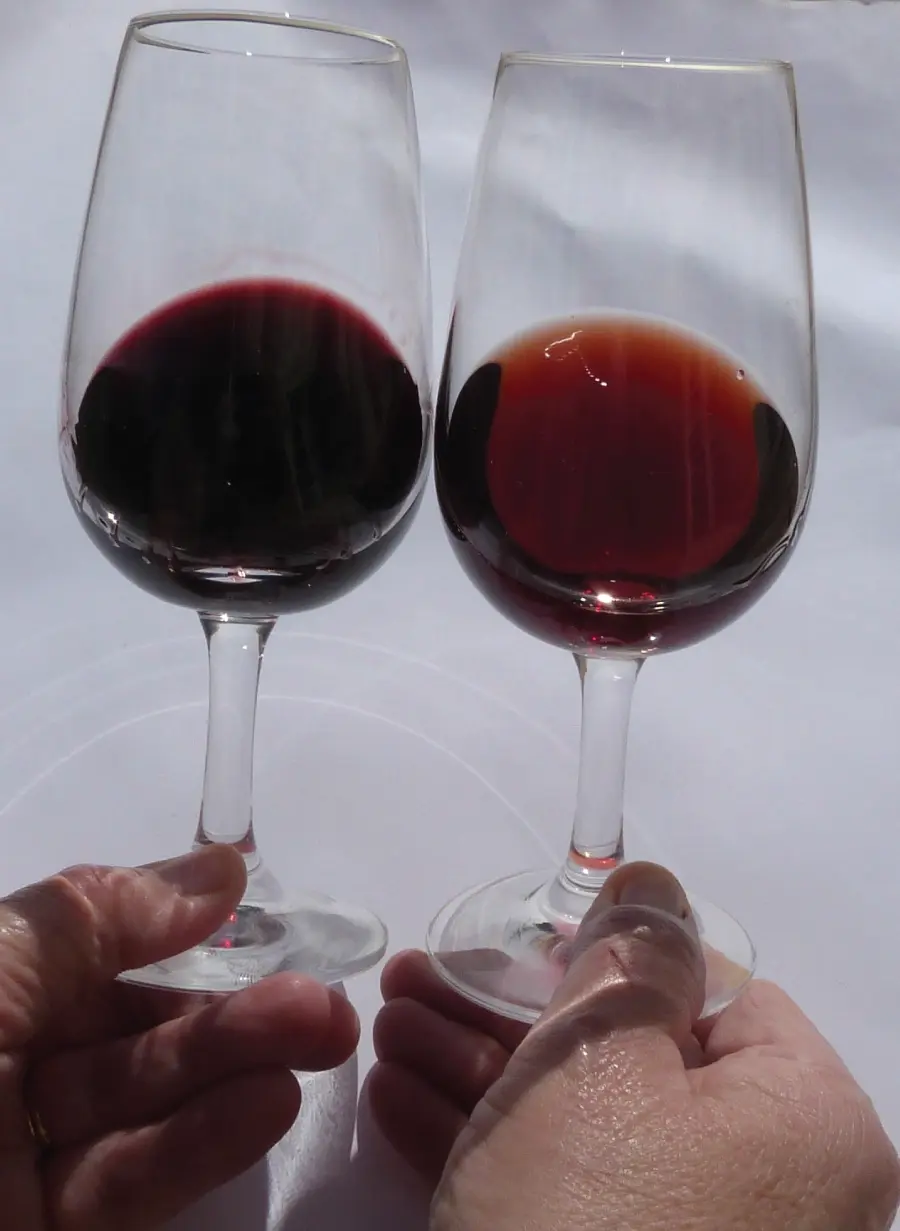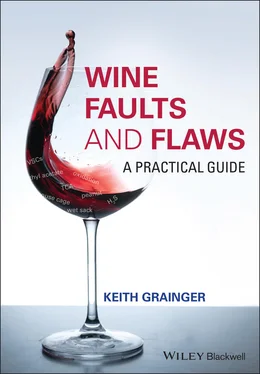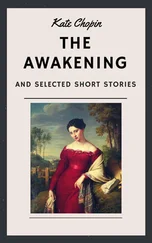Keith Grainger - Wine Faults and Flaws
Здесь есть возможность читать онлайн «Keith Grainger - Wine Faults and Flaws» — ознакомительный отрывок электронной книги совершенно бесплатно, а после прочтения отрывка купить полную версию. В некоторых случаях можно слушать аудио, скачать через торрент в формате fb2 и присутствует краткое содержание. Жанр: unrecognised, на английском языке. Описание произведения, (предисловие) а так же отзывы посетителей доступны на портале библиотеки ЛибКат.
- Название:Wine Faults and Flaws
- Автор:
- Жанр:
- Год:неизвестен
- ISBN:нет данных
- Рейтинг книги:4 / 5. Голосов: 1
-
Избранное:Добавить в избранное
- Отзывы:
-
Ваша оценка:
- 80
- 1
- 2
- 3
- 4
- 5
Wine Faults and Flaws: краткое содержание, описание и аннотация
Предлагаем к чтению аннотацию, описание, краткое содержание или предисловие (зависит от того, что написал сам автор книги «Wine Faults and Flaws»). Если вы не нашли необходимую информацию о книге — напишите в комментариях, мы постараемся отыскать её.
FLAWS
Wine Faults and Flaws: A Practical Guide
An essential guide to the faults and flaws that can affect wine
Wine Faults and Flaws — читать онлайн ознакомительный отрывок
Ниже представлен текст книги, разбитый по страницам. Система сохранения места последней прочитанной страницы, позволяет с удобством читать онлайн бесплатно книгу «Wine Faults and Flaws», без необходимости каждый раз заново искать на чём Вы остановились. Поставьте закладку, и сможете в любой момент перейти на страницу, на которой закончили чтение.
Интервал:
Закладка:

Figure 2.4 Vintage Port and Tawny Port.
A brown wine is tired, oxidised, and probably undrinkable. Red and white wines that are heavily oxidised are pretty much indistinguishable in colour.
2.5.4.4 The Rim and Core
The colour gradation from the heart or core of the wine to the rim, where it touches the glass should be noted. The greatest colour intensity is at the heart, but in the area approaching the rim, the colour is paler and different. For example, a wine that is ruby coloured at its core may gradate to brick red or garnet tones towards the rim, indicating maturity. As the rim of the wine touches the glass, the last millimetre or two will be water clear. The distance of the colour gradation will vary from just a couple of millimetres in a young wine to perhaps a centimetre or more in a mature example. Mature white wines too will have considerable gradation in colour approaching the final few millimetres of the rim, which again will be water clear. The colour of the rim should be observed (any hints of brown being a sign of possible oxidation), and the width of the rim noted, e.g. broad or narrow .
2.5.5 Other Observations
These may include, among other things, bubbles, petillance, legs/tears, and deposits.
2.5.5.1 Bubbles or Petillance
Bubbles are a key feature of sparkling wines, but a small amount may also be observed on still wines.
Still Wines
Occasionally, the presence of bubbles on a still wine could be indicative of a fault – either an alcoholic or malolactic fermentation (MLF) is taking place or has taken place in the bottle. This issue is discussed in Chapter 9. Cloudiness and/or presence of sludgy sediments might be a further indication of this. However, still wines in good condition may contain bubbles or petillance. Gases, namely carbon dioxide (CO 2), nitrogen (N), and argon (Ar) may be used as a blanket at various stages of winemaking to prevent oxidation or other spoilage. Particularly if a very fresh style of wine is desired, it is common to flush the vats with one of these gasses. Bottles too may be pre‐evacuated of oxygen and gas sparged immediately before filling. Some of the gas (particularly CO 2which is highly soluble) may become dissolved in the wine – this does not generally detract from the quality, and can often add a sensation of freshness. Some wines, e.g. wines from the Mosel region of Germany may naturally retain some CO 2from the alcoholic fermentation. In the case of still wines, a brief observation of the size and quantity of bubbles should be made. The bubbles may appear on the tasting glass surface, in which case they are likely to be large, on the rim, or in the heart of the wine.
Sparkling Wines
The quality of the mousse is considered to be an essential part of the overall quality of sparkling wines. The size, quantity, and consistency of the bubbles should be noted. The bubbles may rise from the base of the cup or a seemingly random point in the heart of the wine. Generally speaking, small bubbles are indicative of a desirable cool, slow second fermentation, especially when this has taken place in the bottle as in Champagne and other high‐quality sparkling wines made by the traditional method. The character and volume of bubbles will vary somewhat according to the type and washing of the tasting glass. Of course, a lack of bubbles in ‘sparkling’ wine is a physical fault, almost certainly indicating failure of the cork or other closure. Such a wine will almost certainly show other faults resulting from oxygen ingress, including oxidation.
2.5.5.2 Legs
One of the most misunderstood visual aspects of wine tasting is the presence or otherwise of legs, often referred to as tears. The wine should be swirled in the glass, held to eye‐level and, after waiting for several seconds, viewed horizontally and observed as to how the swirled wine runs back down the glass. If the liquid congeals into little tears, arches, or rivers running down the glass, these are called legs. The legs may be broad or narrow (thin), short or long, and run slowly or more quickly down the glass. Wines that contain a high degree of alcohol will normally show broad legs, formed by the difference in surface tension between water and alcohol and the differential evaporation of alcohol, influenced by sugar and glycol. Several authors and critics claim that legs are purely a sign of high‐alcohol, glycerol or very high residual sugar. This is refuted by examples of their presence in high‐quality wines which are relatively light in alcohol, for example, fine Riesling Kabinetts from the Mosel region in Germany. The amount of dry extract also contributes to legs. Further, the amount and type of legs, if any, can be very dependent on the condition, and particularly the washing and drying of the tasting glass.
2.5.5.3 Deposits
Any deposits in the glass should be noted. These may comprise tannin sediments (which are simply the coagulation of phenolic substances) in the case of red wines or tartrate crystals in either reds or whites. Phenolic sediments naturally occur in fine red wines following bottle maturation, and such wines should be decanted before service. Although some might disagree, tartrate crystals should not be regarded as a wine fault, and are often visible in wines of the very highest quality. Thick deposits in red wines may also be tannin‐stained tartrate deposits (especially in low pH wines). However, in white wines, they can look alarmingly like pieces of broken glass and worry the consumer, but they are completely harmless. The crystals are most likely a precipitate of potassium bitartrate (KC 4H 5O 6) or occasionally calcium tartrate (C 4H 4CaO 6). They are often found in bottles of German or other wines that have a high level of tartaric acid. They may precipitate if the wine is subjected to cold conditions – perhaps in a cold cellar or refrigerator. Many winemakers go to great lengths to try to ensure that the crystals do not appear in the bottle. This topic is discussed in detail in Chapter 15. The money and time spent by the industry on such treatments might be better invested in consumer wine education.
Grey or pale brown deposits are certainly a warning sign – they are most likely to be dead yeast cells or bacteria. Whilst it is possible that these are a consequence of inadequate racking and filtration, they are more likely an indication that the wine has undergone an alcoholic or MLF in the bottle, as discussed in Chapter 9. In any event, the aroma and flavour profiles together with the texture, will have been modified.
2.6 Nose
The second stage in a tasting assessment is to nose the wine. The olfactory epithelium, situated at the top of the nasal cavity, is a very sensitive organ. The tongue reveals only a very limited number of tastes, and most of the ‘taste’ sensations are detected by the receptor cells of the olfactory epithelium, received either via the nasal or retro‐nasal passage. The information is turned into electrical signals and sent via the olfactory bulb to the olfactory cortex in the brain. There is a difference between the impressions of aromas obtained nasally and retro‐nasally, and the sensations transmitted via the retro‐nasal passage will be discussed later in this chapter. There is no doubt that repeated and overexposure to particular smells reduces sensitivity to them, and this can be an issue for winemakers who are regularly exposed to odours such as sulfur dioxide (SO 2), or whose cellars are contaminated with haloanisoles (see Chapter 3).
Читать дальшеИнтервал:
Закладка:
Похожие книги на «Wine Faults and Flaws»
Представляем Вашему вниманию похожие книги на «Wine Faults and Flaws» списком для выбора. Мы отобрали схожую по названию и смыслу литературу в надежде предоставить читателям больше вариантов отыскать новые, интересные, ещё непрочитанные произведения.
Обсуждение, отзывы о книге «Wine Faults and Flaws» и просто собственные мнения читателей. Оставьте ваши комментарии, напишите, что Вы думаете о произведении, его смысле или главных героях. Укажите что конкретно понравилось, а что нет, и почему Вы так считаете.












